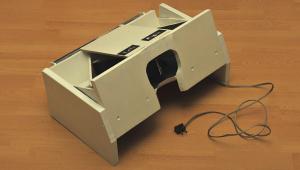Buying Smart; WARNING: Read This If You Use SD Cards!; The SD Compatibility Game
Many of the cameras used by Shutterbug readers use SD memory cards. SD stands for Secure Digital, and it’s the most popular type of media for digital imaging. SD has been around for so long that people use this identifier generically, and refer to all variations simply as “SD.” This practice can lead to problems. There are a couple of new kids on the block, and you should know about them before you run into trouble.
We’ll ignore the subformats (miniSD and microSD). They’re popular in cell phones, but so far only a couple of cameras use these smaller cards. In truth they can be used via an adapter in most devices that require full-sized SD. That’s handy for uploading images from a PDA to a PC, but impractical beyond that, given the low cost of memory cards in general.
In the beginning there was SD. The specifications were defined by the members of the SD Association, a group that was founded in 2000 and now counts more than 1000 companies as members. Plain vanilla SD has a maximum capacity of 2GB. You can still find SD cards for sale, and certainly there are tons of cameras that require them and nothing more. But SD had three major limitations that were vanquished with the introduction of SDHC.
The HC stands for High Capacity. SDHC cards stretch the maximum capacity to 32GB. More importantly, the new SDHC standard required that all cards be honestly labeled with a speed rating. Until then, card manufacturers often spoke a card’s “speed” while referring to burst rate, or occasional speed. The SDHC specification stipulates that the Speed Class rating must reflect the sustained data transfer speed.
And it’s an easy spec to understand. Class 2 cards have a sustained read/write speed of 2MB per second. Class 4 and Class 6 transfer data at 4MB and 6MB respectively. Note that this is the minimum speed. Many cards are capable of higher burst rates, and many card makers include that information in advertising and on the packaging. But look for the distinctive Speed Class rating number when comparing cards.
The third and often overlooked advantage of SDHC has to do with the internal architecture. Now a camera or other host product can check the fragmented state of the card and calculate the write speed in each part of the card. The SDHC camera can determine where to write the data according to its speed requirement.
Enter SDXC
While 32GB seems like a lot of storage space today, remember that 2GB was the whole world when SD first appeared. Last year the SD card consortium released the specifications for the next generation: SDXC. This new design supports storage capacities up to 2TB (terabytes) and increases the bus interface speed up to 104MB per second. A blistering 300MB per second transfer rate is promised in future generations.
The combination of more storage space and faster transfer rates allows HD video camcorders to approach full potential. Coincidentally, the desire to record HD video on D-SLRs also spurs progress in this area. SDXC advances the overall usefulness of SD in these intensely demanding applications. But progress often comes at a price, and here comes the warning:
Use SDXC memory cards ONLY in products designed for SDXC. If an SDXC memory card is used in a camera or computer that does not support SDXC memory cards, you may get a message that prompts you to format the card. DO NOT FORMAT an SDXC memory card in a non-compatible host product. If you do, you will erase the data on the SDXC memory card and format the card for a different file system that will no longer work with SDXC host products.
The backward compatibility paradigm is really simple if you look at it in the right way. In a nutshell, old media works fine in newer devices, but the new media won’t work correctly in the older devices. So don’t even try to use the newer media in older products. Check the chart below.
What’s next? There are four truisms at work, at least today. Memory cards continue to get smaller in physical measurement, larger in storage capacity, faster in data transfer speed, and lower in price. SD and its children are the most powerful and popular digital image storage media cards available today and they just keep getting better.
| SD | cameras accept | SD |
| SDHC | cameras accept | SD, SDHC |
| SDXC | cameras accept | SD, SDHC, SDXC |
| SD | cards work in | SD, SDHC, SDXC |
| SDHC | cards work in | SDHC, SDXC |
| SDXC | cards work in | SDXC |
You can read Jon Sienkiewicz’s Blog at: www.shutterbug.com.
- Log in or register to post comments
















































